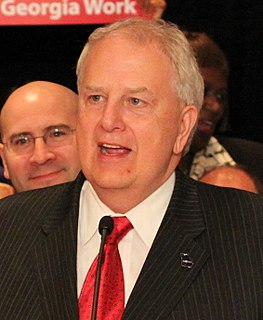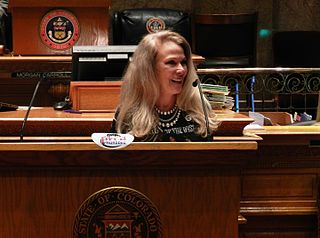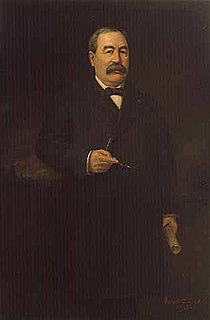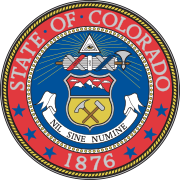
The 2006 Oregon gubernatorial election took place on November 7, 2006. Incumbent Democratic Governor of Oregon Ted Kulongoski ran for a second and final term as governor. Kulongoski faced several challengers in his primary, whom he dispatched to win his party's nomination a second time, while Republican nominee Ron Saxton, the former Chair of the Portland Public Schools Board and a candidate for governor in 2002 emerged from a crowded primary. Kulongoski and Saxton were initially going to be challenged in the general election by State Senator Ben Westlund, but Westlund withdrew his candidacy before the general election. There were, however, a number of strong independent challengers, the most notable of whom was Mary Starrett, the Constitution Party nominee. In a hard-fought campaign, Kulongoski won re-election by a surprisingly wide margin, winning his second term as governor.

In the 2004 New Hampshire gubernatorial race, multi-millionaire businessman John Lynch, a Hopkinton Democrat, defeated Republican incumbent Governor Craig Benson of Rye, and won a two-year term. Lynch was the first candidate to defeat a one-term incumbent governor in New Hampshire in 78 years. He was sworn in on January 6, 2005.

The 2008 United States Senate election in Colorado was held November 4, 2008. The primary elections were held August 12, 2008. Incumbent Republican U.S. Senator Wayne Allard decided to retire instead of seeking a third term. Democratic nominee Mark Udall won the open seat, the first time in 30 years that a Democrat last held it. As of 2019, this is the last time the Democrats have won the Class 2 Senate Seat from Colorado.

The 1998 Idaho gubernatorial election was held on November 3, 1998 to elect the Governor of Idaho. Phil Batt, the Republican incumbent, chose not to run for a second term. The Republican nominee, United States Senator Dirk Kempthorne, handily defeated the Democratic nominee, former Idaho Supreme Court justice Robert C. Huntley, to keep the seat in GOP hands.

The 1994 Idaho gubernatorial election was held on November 8, 1994 to select the governor of the U.S. state of Idaho. Cecil D. Andrus, the Democratic incumbent, chose not to seek reelection after a total of 14 years in office. Former state senator and Republican Party chair Phil Batt engineered a come-from-behind victory to defeat Democratic Attorney General Larry Echo Hawk. Batt's victory put the Idaho statehouse in Republican hands for the first time since 1970.

The 2002 Georgia gubernatorial election was held on November 5, 2002. Incumbent Democratic Governor Roy Barnes sought re-election to a second term as governor. State Senator Sonny Perdue emerged as the Republican nominee from a crowded and hotly contested primary, and he faced off against Barnes, who had faced no opponents in his primary election, in the general election. Though Barnes had been nicknamed "King Roy" due to his unique ability to get his legislative priorities passed, he faced a backlash among Georgia voters due to his proposal to change the state flag. Ultimately, Perdue was able to defeat incumbent Governor Barnes and became the first Republican to serve as governor of the state since Reconstruction.

The Iowa gubernatorial election of 2002 took place November 5, 2002. Incumbent Democratic Governor of Iowa Tom Vilsack sought re-election to a second term as governor. Governor Vilsack won his party's nomination uncontested, while Doug Gross, an advisor to former Governor Terry Branstad, narrowly won the Republican Party's primary in a crowded and competitive election. In the general election, Vilsack was able to improve ever so slightly on his margin of victory four years earlier to win what would be his second and final term as governor.

The 2002 Colorado gubernatorial election was held on November 5, 2002 to select the governor of the state of Colorado. Bill Owens, the Republican incumbent, defeated Democratic nominee Rollie Heath to win a second term. Owen's win set the record for biggest win in a Colorado gubernatorial election. As of 2019, this is the most recent election in which a Republican was elected Governor of Colorado.

The 1998 Colorado gubernatorial election was held on November 3, 1998 to select the governor of the state of Colorado. Roy Romer, the Democratic incumbent was term limited and could not run again. The Republican nominee, Colorado Treasurer Bill Owens, narrowly defeated the Democratic nominee, Colorado Lieutenant Governor Gail Schoettler, to flip the seat to the Republicans for the first time in 24 years.

An election for governor and lieutenant governor of New Mexico was held on November 8, 1994, for the four-year term beginning on January 1, 1995. Candidates for governor and lieutenant governor ran on a ticket as running mates.

The New Mexico gubernatorial election of 1998 contest to elect the next Governor of New Mexico. The winner of the election would serve a term from January 1, 1999 until January 1, 2003. Incumbent Republican Governor Gary Johnson was eligible and ran for re-election and was re-elected.

The 1998 Georgia gubernatorial election was held on November 3, 1998. Incumbent Democratic Governor Zell Miller was unable to seek re-election due to term limits, therefore creating an open seat. To replace him, State Representative Roy Barnes won the Democratic Party's nomination after a close and highly contested primary election, while businessman Guy Millner, who had run for Governor and the United States Senate in the previous four years, won the nomination of the Republican Party. In the general election, Barnes was able to defeat Millner by a margin of victory larger than Governor Miller's victory over Millner four years prior, which was in part due to the unpopularity and controversy of Mitch Skandalakis, the Republican nominee for Lieutenant Governor of Georgia. As of 2018, this is the most recent election in which a Democrat was elected Governor of Georgia.

The Iowa gubernatorial election of 1994 took place November 8, 1994. Incumbent Republican Governor of Iowa Terry Branstad ran for re-election to a fourth term as governor. Branstad narrowly defeated a tough challenger in his primary election, emerging victorious by less than 12,000 votes. On the Democratic side, Attorney General of Iowa Bonnie Campbell won her party's nomination and both Branstad and Campbell moved on to the general election. Branstad ultimately won re-election to a fourth term as governor, defeating Bonnie Campbell by a comfortable margin.

The 1996 United States Senate election in New Mexico was held on November 5, 1996. Incumbent Republican U.S. Senator Pete Domenici won re-election to a fifth term.

When incumbent Democratic Governor Jeanne Shaheen opted to run for the United States Senate rather than seek a fourth term as governor, self-funding businessman Craig Benson, the Republican nominee defeated Mark Fernald, a New Hampshire State Senator and the Democratic nominee, in the general election after each of them won contested primary elections.

The 1994 Ohio gubernatorial election took place on November 8, 1994. Incumbent Republican Governor of Ohio George Voinovich ran for re-election to a second and final term as governor. Voinovich won his party's nomination uncontested and was opposed by State Senator Rob Burch, who won a competitive Democratic primary. Ultimately, Voinovich capitalized on his massive popularity with Ohio and won re-election in an overwhelming landslide, crushing Burch and winning over 70% of the vote.

Vicki Marble is a Republican member of the State of Colorado's General Assembly. Additionally, Senator Marble is Chair of the Local Government Committee and Vice-Chair of the Education Committee.

The 1900 Minnesota gubernatorial election took place on November 6, 1900. Republican Party of Minnesota candidate Samuel Rinnah Van Sant narrowly defeated incumbent Democratic Party of Minnesota Governor John Lind. This was the third of three successive elections in which Lind headed a coalition of the Democrats with the People's Party.

The 1990 Colorado gubernatorial election was held on November 6, 1990. Incumbent Democrat Roy Romer defeated Republican nominee John Andrews with 61.89% of the vote.

The 1986 Colorado gubernatorial election was held on November 4, 1986. Democratic nominee Roy Romer defeated Republican nominee Ted L. Strickland with 58.20% of the vote.

























